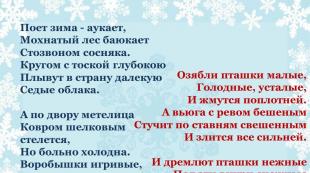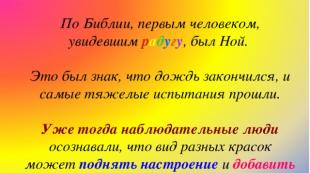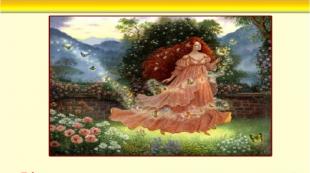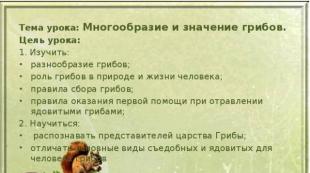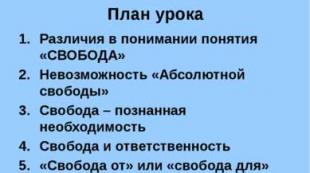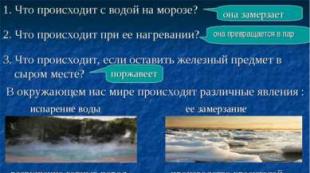Cornstarch paste recipe. How to cook starch paste
Paste has long been used by our grandparents for wallpapering. And even now, after the advent of modern adhesive mixtures, many people prefer this proven tool. Let's figure out how to cook a paste from starch and flour.
Homemade paste - pros and cons
All modern adhesive compositions have a significant drawback - they are not convenient for working on surfaces primed with drying oil or covered with old paint. On such surfaces, only a paste is able to cope with its task.
The only drawback of the paste is its moisture resistance. But this problem can be dealt with by using various additives when cooking the paste.
The advantage of the paste is the ability to easily remove the wallpaper pasted with its use. It is enough just to wet the old wallpaper hot water and they come off easily.
How to cook flour paste?
In order to cook a paste according to this recipe, any flour is used, but it is better to use coarse rye or wheat flour.
The ideal dish for making paste is an enameled or galvanized bucket. Water is poured into the bucket (2/3 of the planned volume) and boiled. After in hot water flour pours in. Fall asleep should be gradual, while mixing the solution very thoroughly. According to the flour paste recipe, about 1/3 of the volume will be required. The paste solution must be brought to the consistency of a very batter. The paste is cooled to 30–40 degrees, filtered through gauze, after which it is used for its intended purpose. Hot paste is not used, because the temperature will deform the pattern or paint on the wallpaper.
How to cook starch paste?
An environmentally friendly adhesive that is suitable for gluing paper, cardboard, light fabrics is considered starch paste. This starch paste is ideal for creating various masks or papier-mâché crafts.
- Starch paste can be cooked according to the same recipe as flour. If you need a better adhesion of the solution, then you can add a little PVA glue to it - for 10 liters of paste 100–200 gr. glue.
- Put starch in a saucepan and pour warm water, in proportion to 1 part starch - 4 parts water. Mix everything well and, having covered with a lid, put to swell for one hour.
- The hour has passed, you can put the pan with starch and water on the fire. Heat the mixture, stirring constantly, until boiling. Without ceasing to stir the starch, reduce the heat to medium. Boil starch until it becomes thick and transparent. Don't stop interfering even for a minute.
- The finished starch paste must be cooled. Pour into prepared container. So that there are no lumps in the finished paste, it must be poured through a sieve.
- You can store the paste cooked from starch in the refrigerator. Average term storage - a week. Starch paste should be with a pleasant food smell and texture.
The benefits of starch paste
- The advantage of starch paste over flour paste is its transparency. Therefore, starch paste is preferable for pasting the ceiling and walls with light wallpaper.
- Any paste must be used immediately after filtration, and try to work out the entire prepared solution for the paste during the day. Otherwise, after a day, the adhesive properties of the paste will decrease significantly.
- In addition to PVA glue, wood glue can be added to the paste, in the same quantities as PVA. But it should be noted that wood glue often leaves reddish spots on the wallpaper, so it is undesirable to add it to the paste when pasting with very light wallpaper.
- A paste containing wood glue is perfect for priming walls and ceilings before wallpapering. Use it for these purposes in a hot form.
Now the market is full of various adhesive products, and earlier they cooked such a mass themselves, and in quality it surpassed many modern analogues. How to make a paste that our grandmothers cooked? There are two proven recipes and several recommendations for choosing ingredients.
What it is
A paste is a do-it-yourself gelatinous adhesive. The composition is used in needlework and less often in repairs (mainly for wallpapering). It does not contain harmful additives, which cannot be said about industrial products. It is thanks to safety that the paste is still relevant. It is a good substitute for PVA.
What is the advantage of making and using a paste for a modern person:
- This is an environmentally friendly product. All stages of preparation are traceable. You can be sure that the composition is safe, unlike what the chemical industry offers.
- The paste replaces expensive adhesives, its cost is very low, in fact, it is equal to the cost of flour or starch.
- Easy to cook, products are available at any time.
- Practical and easy to use formula.
- If you need to remove the wallpaper pasted on the paste, it will not be difficult: just wet the walls, and the coating will come off without leaving a trace.

Of the minuses, it is worth noting the short shelf life. At room temperature, it should be used within a day. If you put it in the refrigerator, it will last there for 2-3 days, but it will still deteriorate, and you will have to throw it away.
To prepare the paste, a minimum of products is used: ordinary wheat / rye flour or starch. To make the composition as convenient as possible for use, you need to adhere to some principles in the choice of components and tools:
- The flour is of low quality. It is this product that gives the adhesive mass the necessary viscosity. Flour premium will not provide the glue with the desired consistency.
- Before use, the flour is sifted through a sieve to get rid of lumps.
- In order for the mass to mix well, you will need a mixer or blender. But it is permissible to stir with a metal spoon - the main thing is that there are no lumps.
- The pan or basin is taken non-stick.
Cooking rules
To prepare a paste, it must be boiled. To do this, a mushy mixture of flour and water is made, placed on the stove and heated over low heat until all the lumps disappear.
Rules for making paste:
- Water is heated on the stove.
- Flour is poured in a thin stream and quickly, to get a more or less uniform consistency, stir.
- The approximate ratio of the bulk component and water is from 1:2 to 1:8.
- The process must be closely monitored so that the mixture does not burn.
- The composition should be cooked on low heat.
- During the cooking process, the paste is stirred with a wooden spatula.
- Ready hot glue is not used in the work. It needs to be chilled first.
Advice! So that the glue definitely does not burn, it is recommended to boil it in a water bath, but the process will take longer - from 15 to 20 minutes.

Wallpaper paste
In the preparation of homemade wallpaper glue, you need to follow the instructions so that the composition is of good quality.
Step-by-step recipe for making paste:
- Sift a glass of flour so that no lumps remain.
- Add cold water small portions, while stirring constantly. You need to achieve the consistency of thick sour cream.
- Stir the solution thoroughly so that all visible lumps dissolve.
- Now you should add water and bring the total volume of the mixture to 1 liter. If it turns out too thick, it is allowed to add a little more water, but now hot.
- 0.5 tbsp is introduced into the mixture. PVA glue, everything is thoroughly mixed. This component will provide viscosity and quick setting.
- Alternative additive -. It will help with gluing painted walls.
- Put the pot with glue on a minimum fire and cook until bubbles appear.
- Now you need to remove the dishes from the heat and stir all the lumps. It does not hurt to filter the composition through gauze folded in several layers - it is important to be careful not to burn yourself.
- The paste is ready. It should be gelatinous and transparent. It remains to cool it and use it for its intended purpose as a regular wallpaper paste.
- If a film forms on the surface, it must be removed.

Advice! Let the paste cool naturally, do not put it in the refrigerator.
Composition for creativity
For papier-mache work, gluing crafts, creating appliqués and other creative purposes, it is very easy to prepare good glue at home.
How to make such a composition:
- At the bottom of the pan, 1 cup of rye or wheat flour is poured.
- Pour 1 glass of water, stir with a mixer.
- Gradually add 2 more cups of water. The mass is stirred, you need to get rid of lumps.
- The pot is placed on the stove. The mixture is brought to a boil over low heat.
- Immediately after boiling, the container must be removed from the stove.
- Wait until the adhesive has completely cooled before use.

Such a composition is stored in sealed glass containers for up to 2 days. Paper products fastened with such a paste will hold firmly.
Starch paste
Instead of flour, potato starch is also taken to create a paste. The starch-based composition has the same strength, and the method of its preparation is similar to the previous ones:
- In 10 tbsp. dilute water with 1 tbsp. starch and mix well.
- Add another 0.5 tbsp. water, stir the lumps.
- If too thick, dilute with a little hot water.
- The mixture is boiled over low heat until it boils.
- It is allowed to use the cooled starch paste after 10 hours.

On a note
Welding glue at home is a simple task, but you also need to apply it correctly. These tips will help you weld and use the paste as efficiently as possible:
- The paste is consumed within one day, no longer, as it quickly turns sour.
- The substance is not used for gluing dense and quality wallpapers. His competence is paper wallpaper medium density.
- Paste, especially from rye flour, is not recommended for frankly thin or light wallpapers, as it can leave yellow spots that will show through.
- To make a paste that repels insects, add a little karbofos to it.
- In heat, the paste loses its characteristics. It should be stored in a cool place or at room temperature (+18-20˚ C).
- It is necessary to prepare the composition immediately before use. The maximum adhesive properties are revealed at a paste temperature of 40 degrees.
- Instead of potato starch, corn starch is often taken. The result is just as great.
Paste is a worthy analogue of modern adhesives. Its main advantages are safety for humans and low cost. Everyone can cook a paste, this is another plus. The use of home glue greatly simplifies life: saves money, protects against poisoning. The paste is good both for repair and for creativity.
To paste over the room with wallpaper without glue is simply unrealistic. You can choose in the store suitable option, but many, knowing how to properly cook paste at home, successfully use it. Why is he good? Why do so many huge selection all kinds of adhesive compositions in the store prefer to make wallpaper glue on their own and how to cook a paste with your own hands? This will be discussed further.
Advantages and disadvantages of using a paste
- The widespread use of paste is due to its low price and availability, because starch or flour can be purchased at any grocery store for a very modest amount of money.
- Glue based on flour or starch, which can be made at home, is suitable for various surfaces. It is considered one of the best for pasting walls previously painted with oil paint or drying oil.
- If the adhesive composition is welded correctly and carefully filtered, it will not leave marks even when the work is done by hand not as neatly as we would like.
- He's got a great grip. In this case, the type of surface does not play any role.
- In terms of durability, it can compete with the highest quality adhesives that you can buy today in hardware stores.
- Removing old wallpaper glued with paste is very simple. You just need to wet the surface. In this case, absolutely no damage will remain on the surface of the wall itself.
- Another important advantage of using a paste is its harmlessness. It can be safely used for pasting a nursery and a bedroom.
Such homemade glue has only one drawback - very low resistance to moisture. However, this can be easily corrected and given the desired properties by adding some substances.
Types of pastes and methods for their preparation
Flour-based glue is the most common DIY option. Its recipe is very simple and anyone can cook it. You will need a galvanized or enameled bucket or any other convenient container, water and, in fact, flour.

Before proceeding with the preparation process itself, it is advisable to calculate the approximate amount of glue that will be needed for pasting.
Consider step by step how to cook flour paste. For this you need:
- pour water into a bucket (2/3 of the planned volume of the finished paste) and bring to a boil;
- add flour (1/3 of the total volume) in small portions and, stirring constantly, cook over low heat until thickened (the density of the mixture should be like dough for pancakes);
- remove from heat and let cool to a temperature of about 40 degrees;
- filter the cooled glue through a sieve or several layers of gauze, which will remove the resulting lumps.
It is very important to prepare the amount of paste that will be needed for work on a given day. It is impossible to store this composition, as it will simply lose the necessary properties.
Do-it-yourself flour paste is suitable not only for wallpapering a room. It can be made and used for paper crafts or for sealing gaps in windows.
It is very important during the preparation of the paste to cool it to the desired temperature, otherwise it can ruin the wallpaper.
For cooking, it is better to take wheat or rye flour. Grinding also matters: the larger, the better the adhesive properties of the composition.
Do not use glue made from rye flour for light-colored materials, as unwanted marks may remain.
Wallpaper glue from starch
A starch-based wallpaper paste is being prepared in the same way as described above. Only here, not flour, but starch is thrown into the water. When the composition has cooled, add a little PVA glue. This will improve its adhesive ability.
Starch-based glue is good when transparency is required, for example, when gluing light paper, pastel-colored wallpaper. But it should be noted right away that its strength is somewhat lower, so it is hardly suitable for heavy wallpaper.
If you have to work with surfaces of dark tones, it is better to replace PVA with wood glue. In this case, the composition will become dark. Do not forget that wood glue on the wallpaper may remain brown spots, so you need to work with glue carefully.
Do-it-yourself starch glue is well suited for pre-walls and walls on which you plan to stick wallpaper. It is important to know that only hot composition should be used as a primer.
Dextrin paste
glue out potato starch or, as it is also called, dextrin paste is used for gluing paper and fabric products.

Recipe. Starch is heated in the oven on a baking sheet at a temperature of 400 degrees until transparent brown lumps form. Then it is cooled to a state of solidification, crushed into powder and diluted with water at the rate of 10 g of powder per 25 ml of liquid. To enhance the adhesive properties of this composition, it is necessary to add 3 grams of sugar to the resulting volume.
- It is advisable to add to any paste during cooking blue vitriol(10 g for each kilogram of starch or flour). Since it contains organic matter, various living creatures can start in it. And copper sulfate previously diluted in warm water will disinfect it. It can also be used as an antiseptic solution of phenol in the amount of 0.02% of the total mass of the adhesive.
- You can prepare a paste both by adding dry substances to water, and vice versa.
- Starch paste is stored only in glassware and no more than 5 hours.
- Any kind of paste must be made and used on the same day. The next day, its adhesive abilities are almost completely lost.
- The density of the glue depends on the material with which you have to work, and therefore the recipe for making glue at home is quite individual.
- Paste recipes based on flour or starch are also suitable for children's creativity. With the help of such compositions, you can create masks and papier-mâché toys with your own hands (in this case, the glue is made thinner).

Conclusion
As you can see, wallpaper paste can be made even at home, and very easily. At the same time, you can significantly save on the purchase of expensive mixtures. You just need to strictly follow the recipe and follow our simple advice and the perfect result will be guaranteed.
The adhesive composition or paste, welded on water from grain processing products, is considered one of the most proven and safe types of glue for homework. The uniquely simple method of preparing the adhesive mass is combined with good mechanical strength of the seam, therefore, even with the advent of water-soluble adhesives based on methylated cellulose, flour and starch paste remains revered among do-it-yourselfers.
High-strength paste can be prepared in three ways:
- On flour, even if the raw materials have long lost their food qualities;
- Using crushed or ground grain;
- Cook on any available grain starch.
Note! To achieve maximum seam strength, paste can best be welded on dried and pounded grain.
True, the yield of grain paste is somewhat less than if the paste mass is cooked from flour. In addition, you will have to work hard to remove the remnants of the screenings and husks, but with due care, you can brew a paste that will even glue vinyl wallpaper tightly.
How to cook flour paste
In order to properly weld and not burn the paste, you will need an enameled or metal non-food utensil with a tight-fitting lid and a steel or cast-iron flame diffuser installed above the gas burner. A simple device allows you to safely heat the paste, cook flour grains, and at the same time avoid overcooking the glue mass into jelly.

Proportions of water and flour
In order to cook a paste, you will need three ingredients:
- Purified water, you can use filtered or settled tap water. The main thing is that rust, organics or scale do not get into the paste. To cook a liter of paste, you need 800 ml or four glasses of water;
- Corn or wheat flour, per liter of adhesive mass is calculated 250 ml of flour. It is best to cook a paste from wholemeal flour, second or third grade;
- Ethyl or formic alcohol, about a tablespoon per liter of the mixture. The additive helps to get rid of lumps and air. It is possible to cook glue without alcohol, but alcohol promotes the hydrolysis of gluten, even if the water is very hard and contains a large amount of salts.
Note! Wallpaper makers advise adding a small amount of soda ash solution, aluminum alum or stationery glue.
Before the advent of specialized brands of glue for wallpapering during mass construction, it was necessary to boil the paste in tens of liters. Additives helped to weld the glue quickly and at the same time ensure storage for several days. At home, you can add alum, this will help to cook a paste that is resistant to fungus and cockroaches. The use of any other additives requires some experience in handling the paste solution.
Cooking and adjusting consistency
You can cook the paste in 10-15 minutes. Slightly warm water is poured into a clean container, about 1/3 of the calculated amount, and flour is added in small portions, approximately in the same volume. The mixture is intensively stirred until a homogeneous mass is formed. The rest of the water is brought to a boil and, continuing to stir the mass, is added to the paste.

Further, in order to weld the glue, the container is transferred to a tile with a divider and heated for ten minutes over high heat. As soon as the paste acquires the texture of a thick milk jelly, the tank with glue is transferred from the fire and cooled in water.
It is not difficult to weld the paste, but you need to carefully monitor the consistency of the glue. In the process of cooking, the paste mass seems too liquid, and when cooled, it thickens strongly. If you do not calculate with the proportions and amount of hot water, the glue most often turns out to be too thick and viscous.
In order to adjust the composition, you need to weld new portion thicker or liquid glue and mix hot with the first paste. The viscosity of the adhesive mass depends on the content of gluten and proteins in the flour, the quality of the water and the precise proportions.
Storage
You can change the consistency of a too thick paste that has stood in the cold for a couple of days with a small amount of not too hot water. If a sour smell appears, the adhesive mass must be boiled over low heat, then add a spoonful of alcohol and mix thoroughly until smooth.
Masters advise to cook the paste a couple of hours before using it and try not to store it for more than one day. You can store the paste without additives and preservatives for one or two days in the refrigerator, in a carefully sealed container. If you need to cook and store a large amount of starch glue for some time, then at the stage of final boiling, the hot mass is divided into several containers, cooled in a water bath and pour half a teaspoon of alcohol or vodka into each jar. Using this technology, you can weld, store and use glue for a week.

How to cook starch paste
In order to cook glue from corn or wheat starch, you need to make a batch: add 1 part of dry starch to 4 parts of slightly warm water. The batch must stand for one and a half hours to swell the starch grain. Next, the mixture should be boiled for 10-15 minutes over high heat, stirring with a spoon or spatula. Even before half an hour, the paste is boiled on a small or medium flame until the glue becomes transparent. Cool in a water bath.
It is easier to weld glue from starch than from flour, but its strength is clearly inferior to flour and, especially, grain adhesive material.
Application of paste
One of the advantages of starch paste is its good penetration into the pores of the walls. For example, a solution of 100 g of alcohol and 200 g of a starch solution can be primed on painted walls or plaster, on which damp spots regularly appear. In the latter case, the paste must be welded with the addition of 10% PVA glue or aluminum alum at the final stage.
It is believed that if you prepare an adhesive mass with the addition of 40 g of calcium chloride per liter of glue, then the pasted wallpaper will not fall off even if the base is strongly moistened.

For light wallpaper
The best option for light wallpaper is a slightly more liquid starch paste than usual. Glue can be cooked from potato starch with the addition of a small amount of PVA. The polyvinyl acetate emulsion is introduced into the almost cooled adhesive and mixed thoroughly. Such glue does not stain, practically does not show through a thin wallpaper, but it is best to use it within a day, or cook it and store it in the refrigerator in conservation mode.
For heavy wallpaper
Even experienced craftsmen prefer to glue non-woven or vinyl wallpapers on expensive branded Methylan, although under heavy wallpapers you can weld very strong glue from cornmeal or starch. If the texture and pattern are light, then the same PVA is added to the paste; for darkened shades, you can cook a starch mixture with the addition of liquid casein glue. It is clear that in any case, the starch must be prepared, cooled, allowed to stand, and only then the additive should be added.

For fabric crafts
Gluing all kinds of toys and fabric crafts requires a large amount of glue, which you can successfully weld yourself. Moreover, if you choose the right additive, you can weld several liters of glue at once, and it will not disappear and will not lose its characteristics, even if it is stored at room temperature.
For strong gluing of the fabric, you need to weld the grain paste. Wheat or oat grain is broken on an electric coffee grinder to the state of ground coffee. The mass must be cooked without sieving. After swelling, the mixture is pressed through a gauze napkin, a small amount of alcohol and PVA are added, and the glue is ready. For heavy fabrics, instead of PVA and wheat, rye grain can be brewed in a water bath with the addition of wood glue and alum.

For papier-mâché
As a working adhesive composition for forming a shell from thin sheets of paper, a base of cornstarch with the addition of 10% alcohol and ready-made wood glue. Such a composition quickly impregnates the paper and dries well in thick layers of cellulose fiber 3-4 mm thick. If the paper has a laminated coating, then for papier-mâché, an adhesive composition with the addition of PVA, acrylic or bustilate is used.

Conclusion
Paste has always been a very convenient material, knowing the recipe, you can weld glue for almost any cellulose materials and cotton fabrics. Grain adhesive can be used to fasten plastic and even fiberboard. The only significant drawback is the edibility of dextrin fibers, starch and flour are easily damaged by fungus and insects, so additives based on vitriol or other metal salts have to be used.
Paste has long been used as wallpaper glue. And even with the advent of modern adhesive compositions, many prefer this unpretentious tool. Moreover, the main reason for such a commitment to the paste is not even the cheapness of its preparation.
What is a paste?
First, let's figure out what a paste is. It's glue homemade. With it, paper and wallpaper are easily fixed on almost any surface.
Paste - natural glue of home origin
The paste is prepared from flour or starch with the addition of water and scalded in boiling water. The corn starch paste has the greatest gluing ability. It is followed by homemade glue made from wheat flour, in the last place is a paste made from potato starch.
Advantages and disadvantages
The fact is that all the most modern adhesive compositions have one big drawback - they do not work well on surfaces covered with old oil paint or primed with drying oil. On such surfaces, only an ordinary paste, cooked from flour or starch, can perfectly cope with its function.
The only drawback of the paste can only be called its instability to moisture. However, this disadvantage can be overcome by using various additives in the preparation of the paste.
The advantages of the paste are many: 
- Properly brewed and filtered, the paste leaves no residue even with not too careful work.
- It adheres well to any surface.
- Its durability is in no way inferior to the most modern adhesive compositions.
- Also, the advantages of the paste include the fact that the wallpaper that is pasted with its use is very easy to remove.
- Water is poured into the container in the amount of 2/3 of the planned volume and boiled.
- Then flour is poured into hot water. This should be done gradually, while thoroughly mixing the solution. Flour will need approximately 1/3 of the volume.
- The solution should be brought to the density of a very liquid dough (cook for 5 minutes).
- After the paste has cooled to 30-40 degrees, it should be filtered through gauze, after which it can be used for its intended purpose.
It is better not to use hot paste. From temperature, the embossed pattern or paint on the wallpaper can be deformed and become unusable.
Method number 2
In this recipe, the ratio of flour and water is 1:3.
Remember that the finished mass should be similar to batter
- Pour the flour into a container. Fill with water.
- We put the container on the stove and cook, stirring constantly, over low heat until the mass becomes homogeneous.
- After the water boils, remove it from the heat, filter through cheesecloth or a sieve, cool.
How to cook from starch with your own hands
The advantage of starch paste over flour paste is its transparency. Although flour paste leaves almost no traces, starch paste is still preferable for pasting walls and light wallpaper.

Damp wall paste has a higher adhesive power
Starch paste recipe for ordinary walls
- 750 g of potato starch are kneaded in 200 ml of wood alcohol.
- To the resulting mass, add 1.5 liters of water, mix thoroughly.
- The next step is to add 8-9 liters of boiling water and bring the whole mixture to a boil.
- Separately from the mixture, 100 g of alum are dissolved in 0.3 l of water.
- The resulting solution is poured into the boiled mixture and mixed until a uniform mass.
- The composition is cooled and filtered.
How to make homemade glue for damp walls
- 40 g of calcium chloride are dissolved in 600 ml of water, the mixture is put on fire and brought to a boil.
- In addition, 400 ml of water and 400 g of potato or corn starch are separately mixed;
- The mixture from the first point is added to the resulting mixture. Stir, heat and add another 4-5 liters of water.
- The resulting mixture is boiled for another 2-3 minutes and removed from heat.
Do not forget to periodically remove the film that forms after the starch paste has cooled.
- Any paste should preferably be used immediately after filtration, or at least on the same day. After a day, the adhesive qualities of the paste are significantly reduced.
- Make the paste in small portions to prevent the mixture from cooling and hardening quickly.
- It is best to store unused mixture in a container with a lid in the refrigerator.
- If the glue gets on the skin or furniture, it is enough to wipe the contaminated area with a damp warm cloth.
- If we talk about additives to the paste, then in addition to PVA glue, you can also use wood glue, which is added in the same quantities as PVA glue (1 part of glue to 1 part of water). At the same time, it should be taken into account that wood glue can leave reddish spots on the wallpaper, and it is not recommended to use such an additive when pasting with very light wallpaper.
A paste with the addition of wood glue is perfect for priming the surface of walls and ceilings before wallpapering. And for these purposes, it should be used hot.
Video: how to cook flour paste for wallpapering, papier-mâché, etc.
